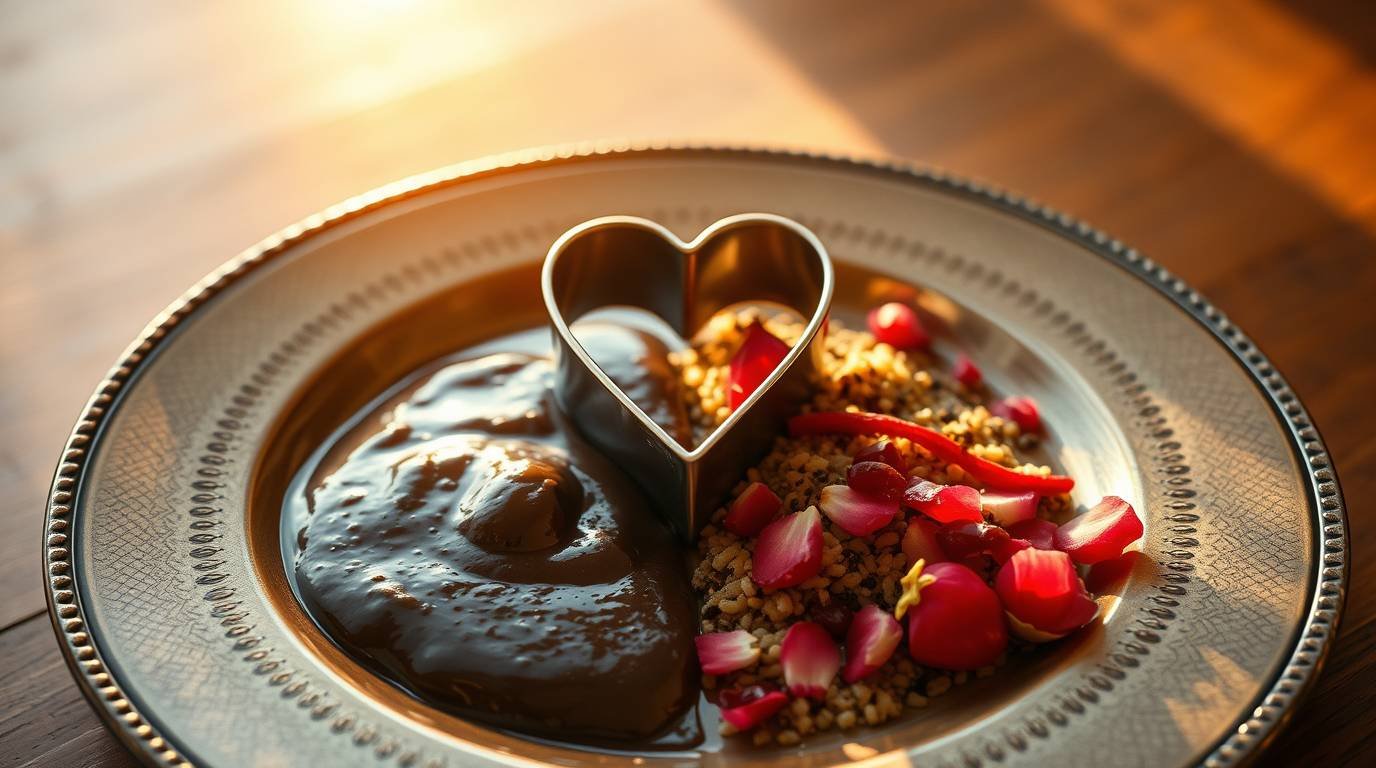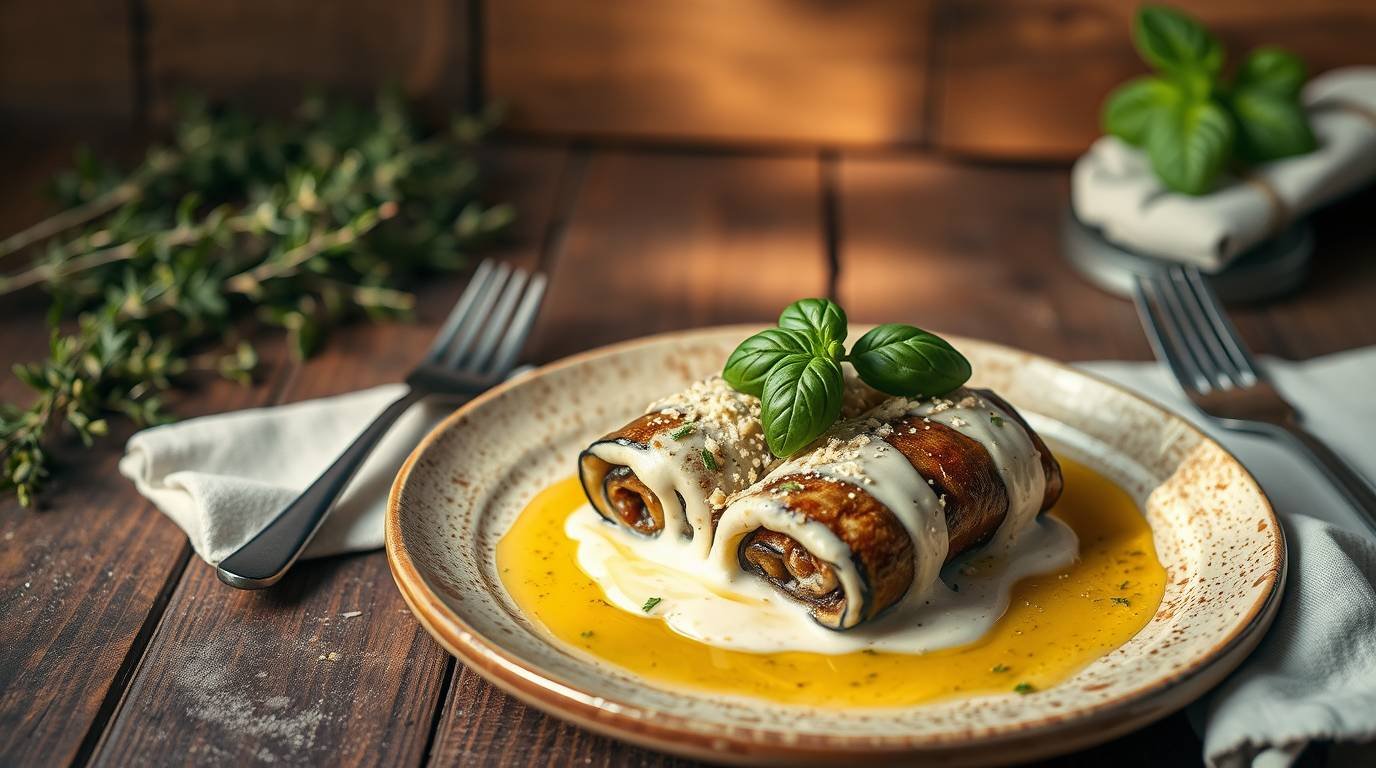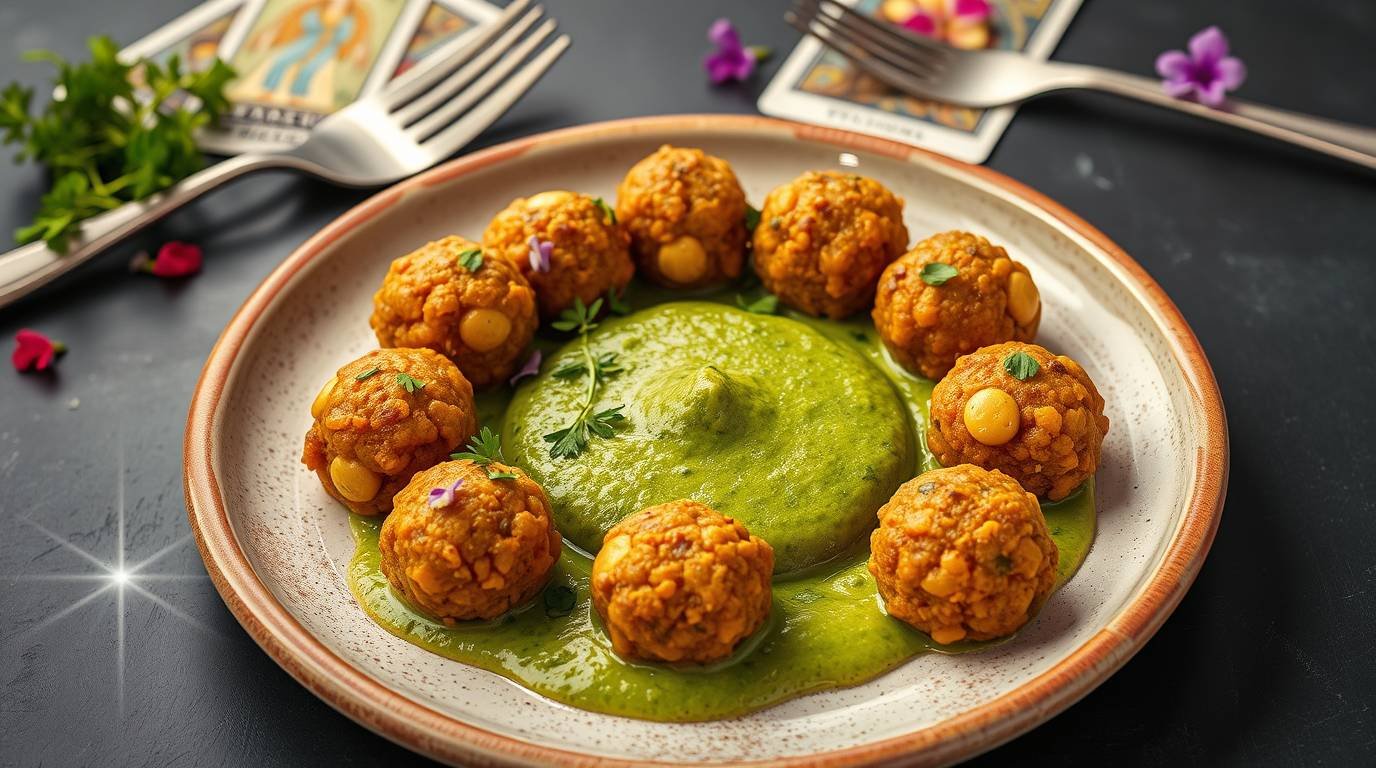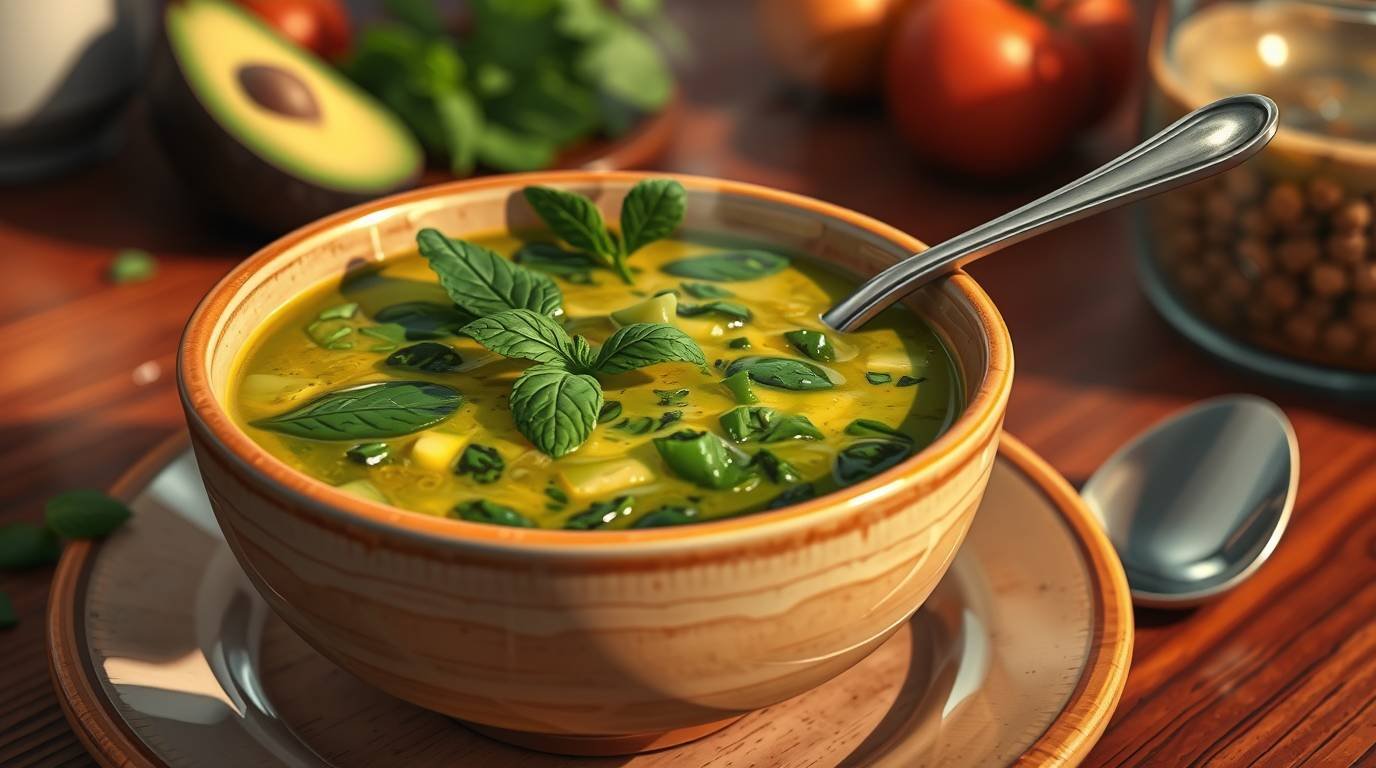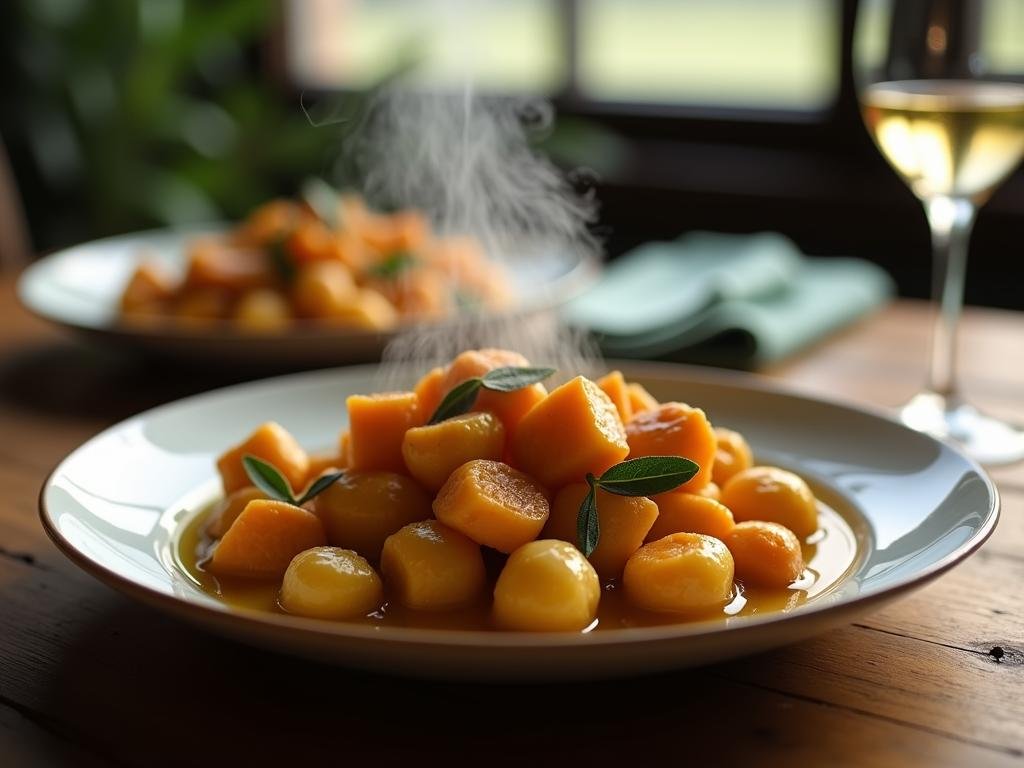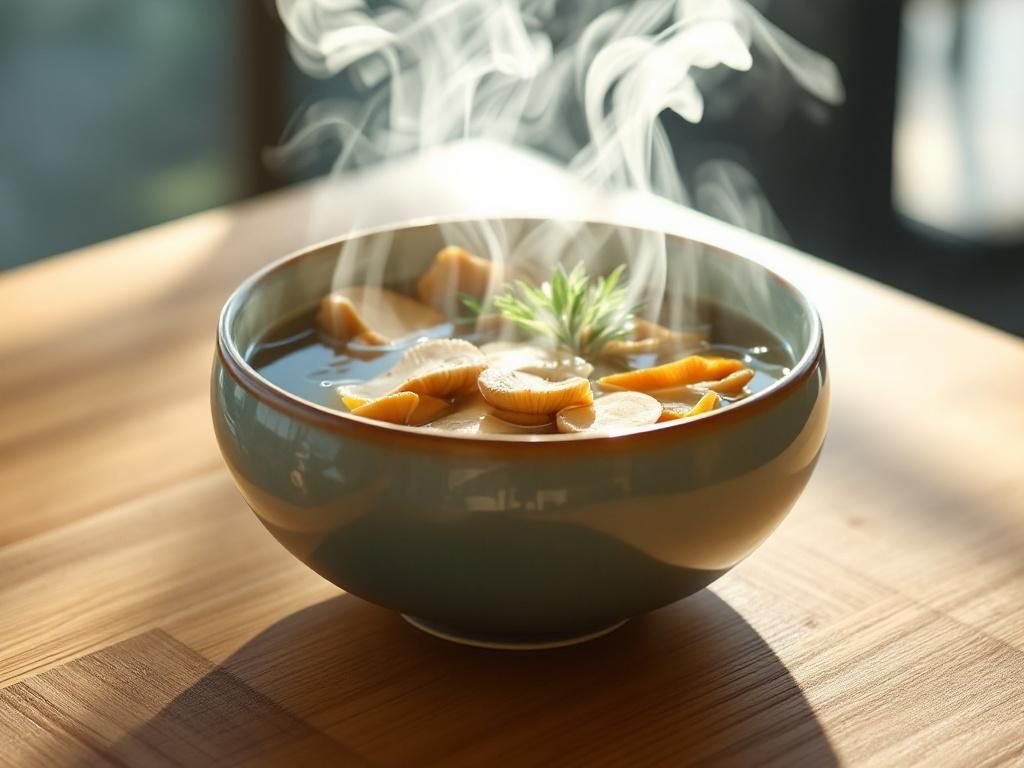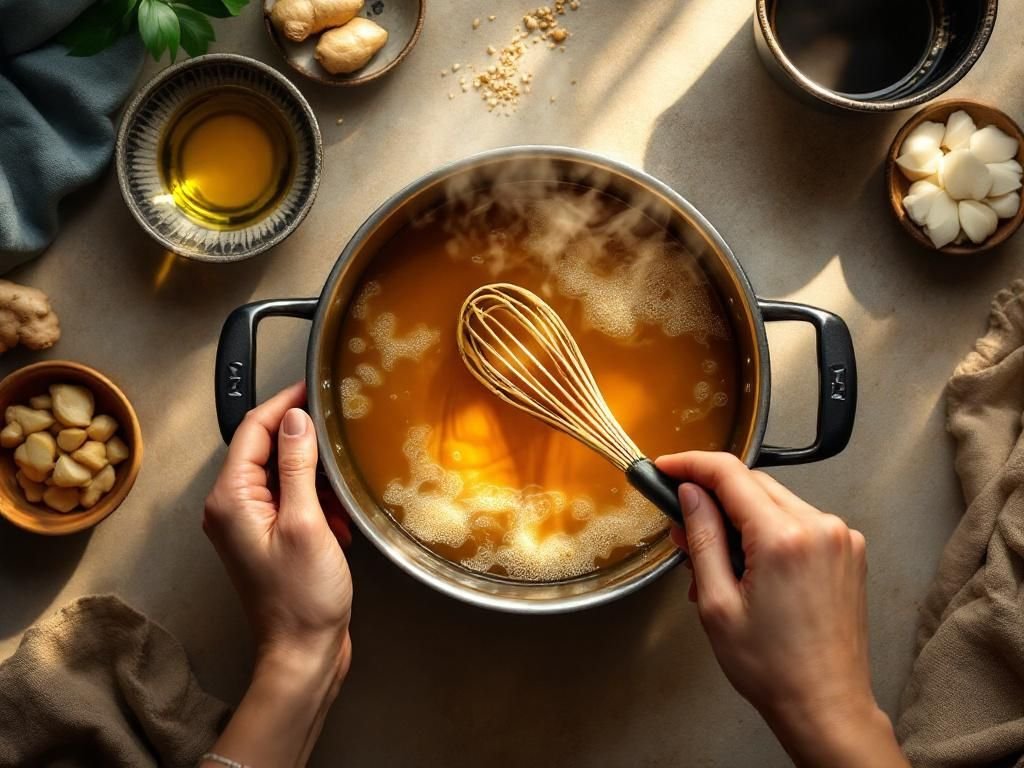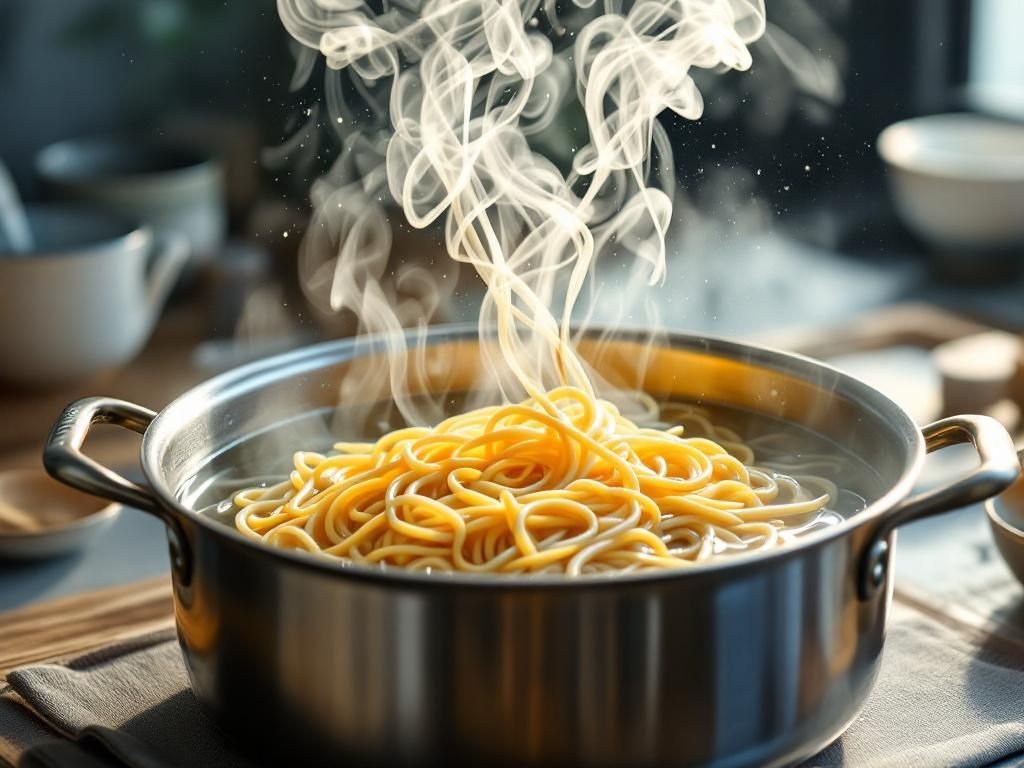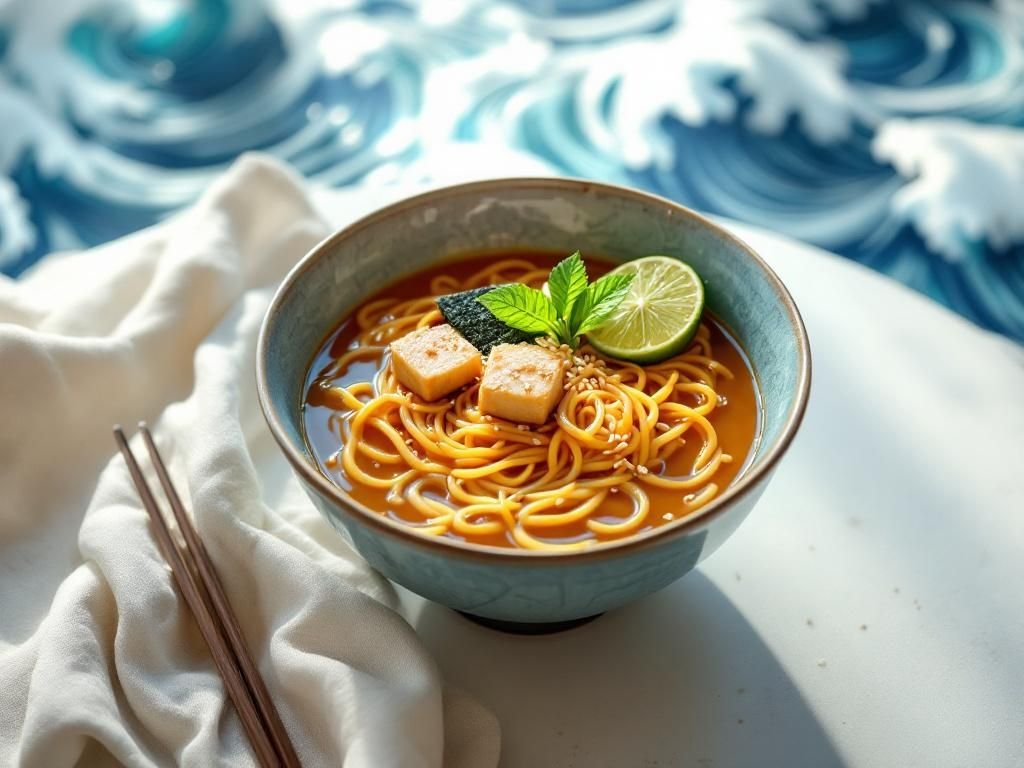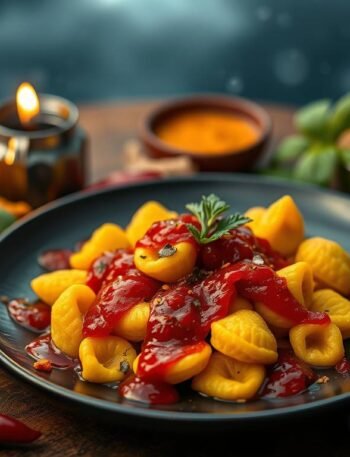How to Make Oceanic Ramen with Tofu Pearls and Nori Foam
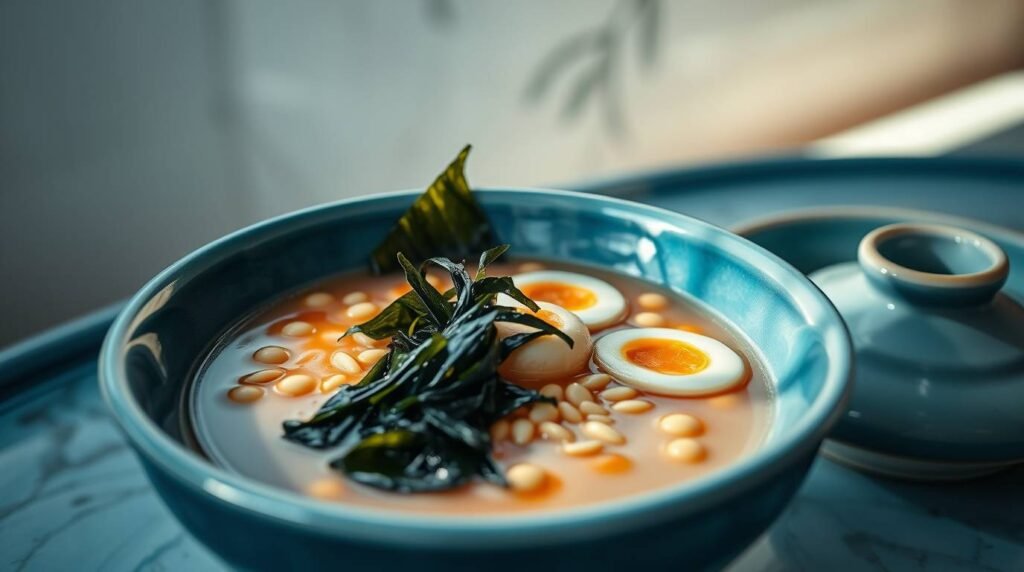

Oceanic Ramen with Tofu Pearls and Nori Foam is an exquisite dish that transports the essence of the sea to your table. This recipe combines the rich umami flavors of the ocean with the comforting warmth of ramen, offering a delicate balance between traditional Japanese culinary techniques and modern culinary innovation. By incorporating tofu pearls and a light nori foam, this dish not only captivates the senses but also introduces a playful texture, creating a dining experience that is as visually appealing as it is delicious.
🌊 Marco’s Story: The Wave and the Word
The night the tide roared in Napa, Marco stood by the window of Mystic Bites, watching the reflection of neon signs shimmer across the river like living brushstrokes. He was preparing a new dish — a bowl meant to calm his own inner storm. The air smelled of seaweed, sesame, and something else… anticipation.
On the counter before him lay three tarot cards: The Moon, The Star, and The Hierophant.
The Moon whispered of emotion’s ebb and flow, the Star promised renewal, and the Hierophant reminded him of the sacred order even within chaos. Together, they formed a triad — intuition, expression, grounding.
As he stirred the broth, the steam rose like a phantom wave. He thought of Hokusai, the artist who painted motion and stillness in one eternal instant. “That,” Marco mused, “is what a good dish must do — crash and cradle at once.”
He began to chant softly, his haiku spell forming between breaths:
Beneath foam and tide,
Roots anchor in silent strength—
The sea learns to sing.
Each movement — slicing tofu, tearing nori, stirring miso — became a ritual. The Root Chakra anchored him to his kitchen floor, to the earth that gave the sea its boundary. The Throat Chakra opened as the broth simmered, releasing a sound he didn’t expect — a deep hum resonating through the pot and through his chest.
He closed his eyes. In that vibration, he felt something ancient rise: the voice of the ocean speaking in the language of salt, flow, and surrender.
When he finally tasted the ramen, it was both grounding and ethereal.
The umami anchored his feet, while the foam carried his voice upward, clear and open — as if the sea itself had spoken through him.
🜂 Tarot Insight
-
The Moon — Honor the tides of emotion; your intuition is the current that guides you.
-
The Star — Speak your truth gently, as light upon the water.
-
The Hierophant — Structure your rituals, so chaos becomes sacred order.
🌐 Chakra Integration
-
Root Chakra (Muladhara): Ground through nourishment — tofu, seaweed, and the solidity of ritual.
-
Throat Chakra (Vishuddha): Flow through expression — breath, mantra, and sound.
🜏 Magical Reflection
Every bowl of Oceanic Ramen is a microcosm of The Great Wave — a meditation on being both solid and fluid. It teaches the magician-chef that even in chaos, there is rhythm; even in silence, there is sound.
Origin and Cultural Significance
Ramen, originally a Chinese dish, has become a staple of Japanese cuisine, evolving over centuries into a beloved comfort food. It boasts a rich history, with regional variations across Japan that reflect local tastes and ingredients. The concept of oceanic-inspired ramen draws from Japan’s deep connection to the sea, emphasizing the use of marine ingredients like nori (seaweed) and wakame. These elements not only pay homage to Japan’s maritime heritage but also highlight the Japanese philosophy of umami—the fifth taste—characterized by a savory richness that enhances the dish’s overall depth.
Throughout history, Japanese cuisine has placed a strong emphasis on seasonal ingredients and the balance of flavors. Oceanic Ramen with Tofu Pearls and Nori Foam respects this tradition by incorporating fresh, wholesome components that align with these principles. The use of tofu, a versatile protein that originated in China over 2,000 years ago, reflects the cross-cultural exchange that has enriched Japanese culinary practices. Its inclusion in this recipe adds a subtle creaminess, complementing the briny notes of the sea.
Unique Ingredients and Flavors
At the heart of this dish is the delicate balance of flavors achieved through its unique ingredients. Kombu, a type of kelp, and shiitake mushrooms form the base of the broth, infusing it with a deep, earthy umami. Kombu is renowned in Japanese cuisine for its ability to enhance flavors without overpowering them, making it a perfect foundation for this oceanic creation. Shiitake mushrooms, with their robust flavor, further enrich the broth, adding layers of complexity.
The tofu pearls offer a modern twist, providing a soft, silky contrast to the broth’s depth. By shaping the tofu into small spheres or cubes, each bite becomes a delightful surprise, adding a playful element to the dish. The incorporation of ginger and garlic imparts a subtle heat, while sesame oil brings a nutty aroma that rounds out the flavor profile.
Nori foam, a modernist touch, introduces airiness and a burst of oceanic essence. The nori, when transformed into foam, captures the lightness of the sea breeze, enhancing the sensory experience with its delicate texture. This innovative technique showcases the versatility of seaweed, elevating its role from a simple garnish to a central component that excites both the palate and the eye.
Cooking Techniques and Experience
Preparing Oceanic Ramen with Tofu Pearls and Nori Foam involves a harmonious blend of traditional and contemporary cooking techniques. The process begins with simmering kombu and shiitake mushrooms to create a rich dashi, a fundamental technique in Japanese cooking that draws out the purest flavors from simple ingredients. Careful attention is given to maintaining the miso’s probiotic qualities, requiring gentle heat to preserve its health benefits while enhancing the broth’s flavor.
Cooking the noodles separately ensures they achieve the perfect al dente texture, a crucial aspect of any ramen dish. The technique of rinsing the noodles under cold water halts the cooking process, preventing them from becoming overly soft and allowing them to retain their springy texture, essential for the right mouthfeel.
The final assembly of the dish is a celebration of culinary artistry. The gentle folding of tofu pearls, bok choy, and carrots into the broth mirrors the waves of the ocean, creating a visual and sensory flow that captivates diners. The garnishing with sesame seeds, a lime wedge, and chili oil not only enhances the flavor but also introduces a visual contrast that entices the senses, making each bite a journey through the intricate layers of taste and texture.
In essence, Oceanic Ramen with Tofu Pearls and Nori Foam is a tribute to Japan’s culinary heritage, embracing both tradition and innovation. It invites diners to explore the depths of flavor and texture, offering a unique interpretation of ramen that honors the sea’s bounty while delighting the senses with every bite.
How to Make Oceanic Ramen with Tofu Pearls and Nori Foam
Description
Experience the taste of the ocean in a bowl with this unique ramen, where tofu pearls meld with a savory broth and nori foam adds a touch of seaside elegance.
Ingredients
Broth
Ramen Base
Toppings (optional)
Instructions
Prepare the Broth
-
Simmer the Base Ingredients
Simmer kombu and shiitake for 15 minutes. Remove solids, then add miso, tamari, ginger, garlic, and sesame oil.Stir gently—do not boil—to preserve miso’s probiotic essence.
Cook the Noodles
-
Prepare the Soba Noodles
In a separate pot, cook soba noodles until al dente. Rinse under cold water to stop cooking and prevent clumping.Ensure noodles are properly rinsed to maintain their texture.
Create the Flow
-
Combine Ingredients in Broth
Return noodles to broth, add tofu pearls, bok choy, carrots, and nori. Let it all move together for 2–3 minutes, like the wave meeting the shore.This step allows flavors to meld together while keeping the vegetables crisp.
Plate and Garnish
-
Finish and Serve
Serve in deep bowls. Sprinkle sesame seeds, add a lime wedge, and drizzle a touch of chili oil.Customize with additional toppings like microgreens or chives for extra flavor and texture.
Drink Pairing:
-
Tidal Bloom Elixir
🧪 Ingredients (serves 1)
-
1 cup butterfly pea flower tea (steeped, deep indigo) — color-changing magic.
-
½ tsp honey or light agave (optional, to taste)
-
½ oz fresh lemon or lime juice
-
Pinch of sea salt or a drop of seaweed-infused tincture (for umami echo)
-
Sparkling water to top
-
Ice
-
Garnish: edible flower (such as violet), a small strip of nori, or a sprig of mint
- SEE NOTES BELLOW
-
Note
Note: Butterfly pea flower tea is a popular “blue tea” that shifts color with pH (adding citrus shifts it toward violet). Wikipedia+1
🔄 Instructions
- Brew your butterfly pea flowers in hot water (around 5–10 min) to a rich blue. Let cool.
- In a glass, combine cooled tea + honey/agave + sea salt or tincture. Stir gently.
- Add ice, then pour in fresh lemon or lime juice — watch the color shift.
- Top with sparkling water for effervescence.
- Garnish with flower and nori or mint. Serve chilled.
Essence of the Dish
The Oceanic Ramen with Tofu Pearls and Nori Foam presents a harmonious blend of flavors and textures, embodying the delicate balance between the earthiness of the miso-infused broth and the subtle oceanic notes of nori. Each sip of the broth offers a gentle embrace, while the tofu pearls add a creamy contrast that dances on the palate. The fresh crunch of bok choy and carrots complements the softness of the noodles, creating a symphonic culinary experience that transports you to the tranquil shores of a distant coastline.
Personal Reflections
Crafting this dish is akin to painting with flavors. The aroma of ginger and garlic mingling with the broth evokes a sense of comfort and warmth, reminiscent of cherished moments shared over a nourishing bowl of ramen. The vibrant colors of the ingredients not only please the eye but also invite a deeper appreciation for the art of cooking. This recipe is a testament to the beauty of simplicity and the power of mindful cooking.
Serving Suggestions and Variations
For a heartier meal, consider adding a soft-boiled egg or a handful of bean sprouts for additional texture. A sprinkle of toasted sesame seeds or a drizzle of chili oil can elevate the dish with added layers of flavor. To cater to different dietary needs, feel free to substitute the soba noodles with zucchini noodles or other gluten-free options.
Encouragement and Community Engagement
I invite you to embark on this culinary journey and explore the depths of flavor this Oceanic Ramen offers. As you savor each bite, reflect on the connection between the ingredients and your senses. I encourage you to share your experiences, variations, or questions, fostering a community of exploration and creativity around this delightful dish.
Tag tarot_mistical_lab/ if you made this recipe.
Frequently Asked Questions
Can I substitute soba noodles with another type of noodle?
Yes, you can use rice noodles or udon noodles as substitutes for soba noodles.
How can I make the dish spicier?
You can add more chili oil or include sliced fresh chili peppers for extra heat.
Is there a gluten-free option for this recipe?
Yes, you can use gluten-free tamari and rice noodles to make the dish gluten-free.
What can I serve alongside this ramen?
You can serve a side of edamame or a simple cucumber salad to complement the ramen.
How do I store leftovers?
Store leftovers in an airtight container in the fridge for up to 3 days. Reheat thoroughly before serving.
Hello, beautiful people! I am Marco DeLuca, Mystic Chef.
Master Chef • Tarot Grandmaster • Rune Caster
Crafting recipes that blend magick, flavor, and soul.
You may also like...


Sun Magic Spiritual Wrap of the Wheel of Fortune


Fig and Goat Cheese Salad with Walnuts: A Sweet & Savory Symphony



